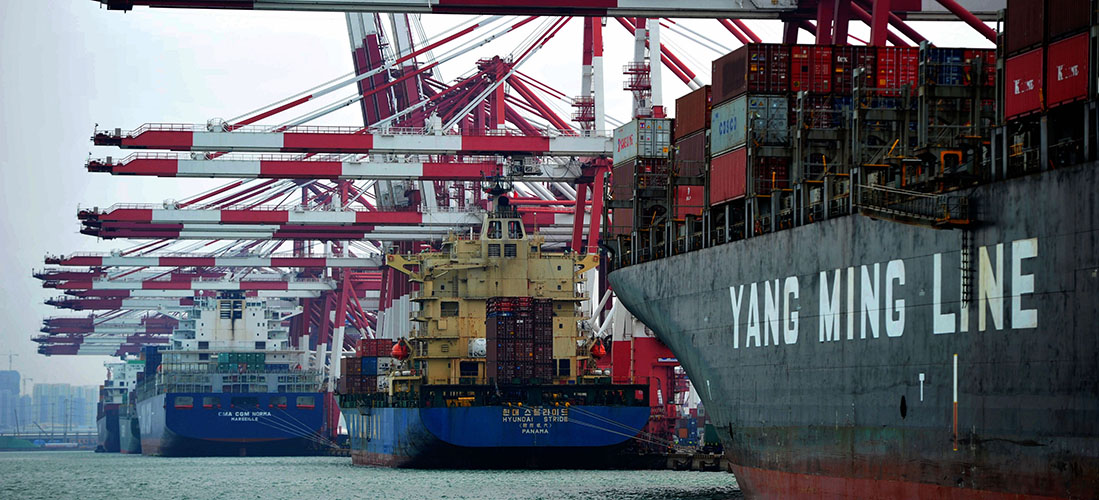(Version in Español)
Low-income countries have spent a lot of time thinking about how they can achieve faster growth, and we have done some research to help them. We found that pursuing export diversification is a gateway to higher growth for these economies. Using a newly constructed diversification toolkit, our empirical analysis shows that both the range and quality of the goods a country produces has a direct impact on growth
Country trends
Low-income countries have historically depended on a narrow range of primary products and few export markets for the bulk of their export earnings.
But export diversification is associated with higher per capita incomes, lower output volatility, and higher economic stability—relationships that can be tracked using our new publically available dataset, which gives researchers and policymakers access to measures of export diversification and product quality for 178 countries from 1962-2010.
We have looked at two measures of export diversification and their impact on economic growth. One measure captures diversification into new product lines, the other development of a more balanced mix of existing products. Analysis using these measures shows that export diversification in low-income countries is indeed among the most effective drivers of economic growth.
Since the mid-1990s, there has been a notable increase in export diversification in low income countries, particularly in South Asia, and a shift from agriculture to manufacturing production in many of these economies. For instance, Vietnam transformed its economy from a low-end agricultural exporter to a successful middle-range manufacturing exporter in less than two decades.
Countries in sub-Saharan Africa have had more varied experiences with diversification compared to other regions. For example, Tanzania, Uganda, and Kenya underwent significant export diversification in the last 20 years, yet many other countries in the region have not.
Typically diversification in East and South Asia has been accompanied by a rapid decline in the share of agricultural exports—from 40 percent in 1965-1970 to 15 percent in 2006-2010—along with a steady increase of the manufacturing sector—from 17 percent in 1965-1970 to 66 percent in 2006-2010. But in Africa, the sizable shift away from agricultural exports has been met with only a small rise in the share of manufacturing exports.
All regions, including sub-Saharan Africa, have made significant progress in diversifying their exports across partners. This trend is related to the ongoing process of globalization and a clear shift in low-income country trade away from the European Union and towards Asia—China in particular— and sub-Saharan Africa.
Quality, not quantity
New products and trading partners underpin economic development, and so do quality improvements to existing products.
Low-income countries’ small economic size and limited potential to exploit economies of scale may imply that the cost of moving into many new products is high, making quality upgrading within existing products a more feasible route to diversify.
To quantify quality upgrading—producing higher-quality varieties of existing products—we developed a new dataset that measures quality for 851 products in almost all countries.
The new data show that since the mid-1980s, developing countries in the East Asia and the Pacific region have seen a steady increase in the overall quality of their exports quality, driven mainly by upgrades in the manufacturing sector. On the other hand, sub-Saharan Africa experienced a steady decrease due to limited quality upgrading in the manufacturing sector, coupled with a significant fall in quality upgrading in agriculture.
We see particularly rapid quality upgrading during the early stages of development, which is associated with higher growth. This relationship holds strongest in the manufacturing sector.
But we also find that ample quality upgrading opportunities exist in agriculture, which is particularly important since in low-income countries, this sector still employs a large share of the population.
Therefore it would be a mistake to overlook agricultural development as a means of diversifying production and upgrading quality. In fact, low-income countries will find that when they modernize and transform their agricultural sectors they can reap substantial gains in both productivity and quality. For instance, agricultural diversification can support entry into new products and accelerate the transition from subsistence farming to production for the market.
Policies to help diversify the economy
Low-income countries should consider diversification and quality upgrading a fundamental component of their development strategy, given their important roles in enhancing growth. How then can these countries diversify into new products, and upgrade the quality of existing products?
Findings from our empirical analysis reveal that a common set of economic fundamentals and policies are associated with various dimensions of diversification.
Investment in human capital and infrastructure, institutional quality, financial deepening— increased efficiency, depth, and breadth of financial systems— and proximity to markets are all drivers of export diversification.
Economic policies can also encourage diversification and quality upgrading. For example, increasing stability, like Vietnam’s push to reduce inflation in the late 1980s, reducing direct barriers to entry, such as the dismantling of the state distribution system in Tanzania, and reforming the agricultural and banking sectors helped promote diversification.
However, as our country case studies demonstrated, there is no universal diversification trajectory, and a one-size-fits-all approach to diversification and transformation should be avoided.
The new Diversification Toolkit provides easy access to highly disaggregated, product-level data on export diversification and product quality, enabling country authorities, policy makers and researchers to conduct more detailed, country-specific analysis.




